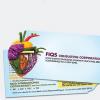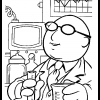Hi Blake,
The extracts / links below may answer some of yr queries.
(1) Has the kitchen considered allergen contamination? When food equipment, crockery and cutlery is placed in the dishwasher at 82.c, it will remove all allergens. Hot oil does not destroy allergens in the fryer. Some kitchens will use separate areas or equipment for specific foods helping to limit cross contamination.
http://www.allergen-...lergen-control/
-----------------------
(2) Make sure all pans, dishes, utensils, knives, measuring cups, chopping boards, pots, pans, grills, oven trays and dishes etc are washed in a dishwasher or with detergent at a high temperature to remove all trace allergens.
https://www.allergya...ets-prevent-it/
--------------------------
(3) 1.0 Cleaning
1.1 All equipment(s) coming into contact with an allergen(s) or a product containing an allergen(s) must be washed and sanitized prior to changing over to another product.
1.2 Rinse and clean allergen-containing containers LAST. Ensure that the dishwasher and 3 compartment sinks are thoroughly cleaned. There should be no allergen residues.
Never reuse allergen-containing containers (e.g. milk crates, cheese buckets) even after cleaning
 Allergen Control Program.doc 53.5KB
152 downloads
Allergen Control Program.doc 53.5KB
152 downloads
-----------------------
(4) Hands, utensils, cutlery and work surfaces should be washed scrupulously after handling foods containing nuts – they should even be wiped/rinsed before they are put in a dishwasher if they are sticky eg peanut butter, mayonnaise, chocolate sauce, creamy puddings
https://www.allergyu...-food-allergies
----------------------
(5) Ideally you should use separate equipment, but if not, everything must be clean and recently passed through your dishwasher, adhere to the cleaning schedules detailed in food hygiene training. You may already be using special utensils and equipment such as the Saf-T-Zone Kit. If not this is a specialised set of equipment, that is passed through a dishwasher after each use and is coloured purple to indicate its use for allergens and intolerances. The case keeps the chopping board and the utensils free from contamination between uses.
 Allergen Management.pdf 595.28KB
204 downloads
Allergen Management.pdf 595.28KB
204 downloads
--------------------------
I would have thought that the logical solution for all exhausted water is to direct it to an out-going floor drain line in a controlled way. Or is this not logistically possible ?
In some of cases above the testing suggestions of previous post might modify the restrictions (eg No.3). -




















